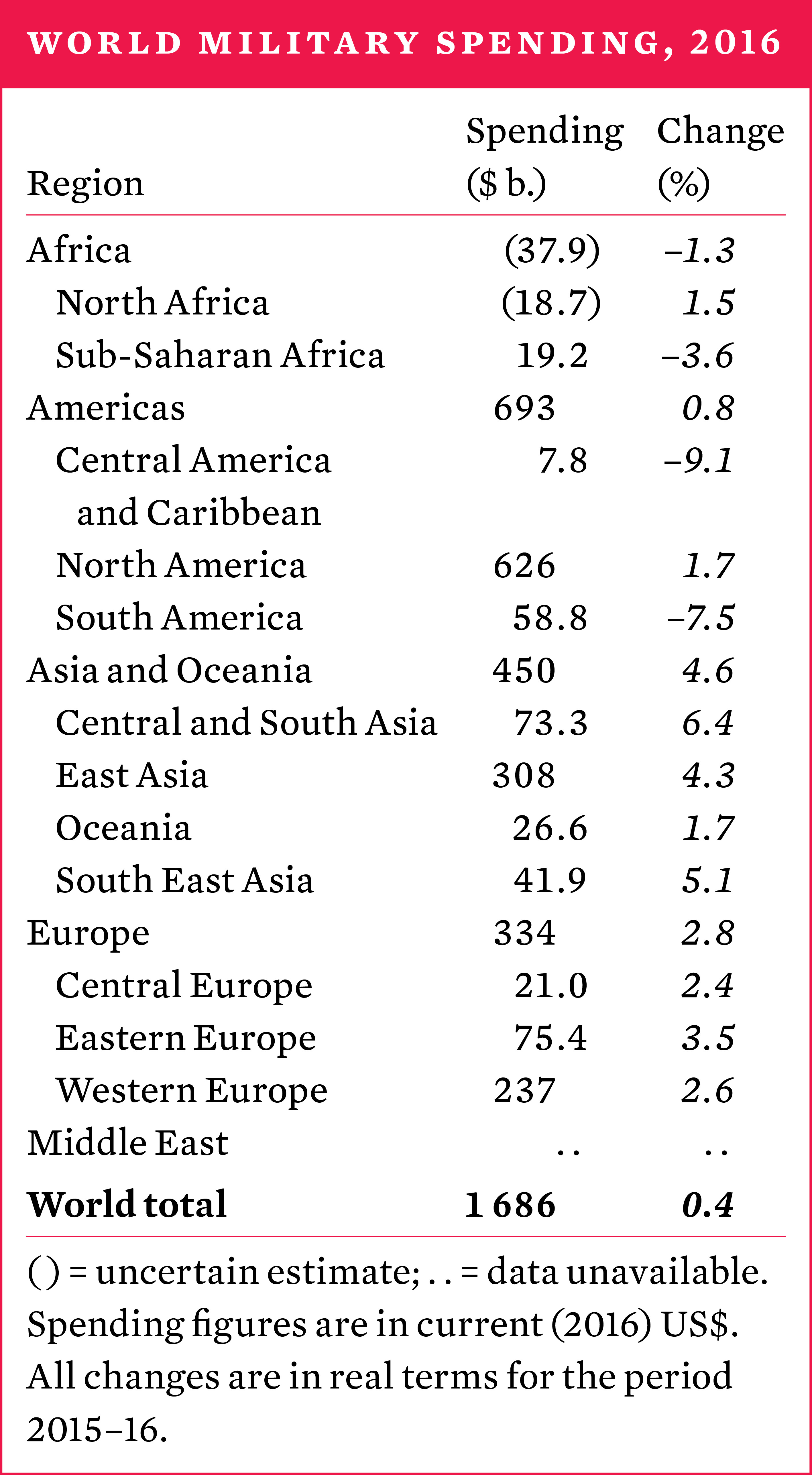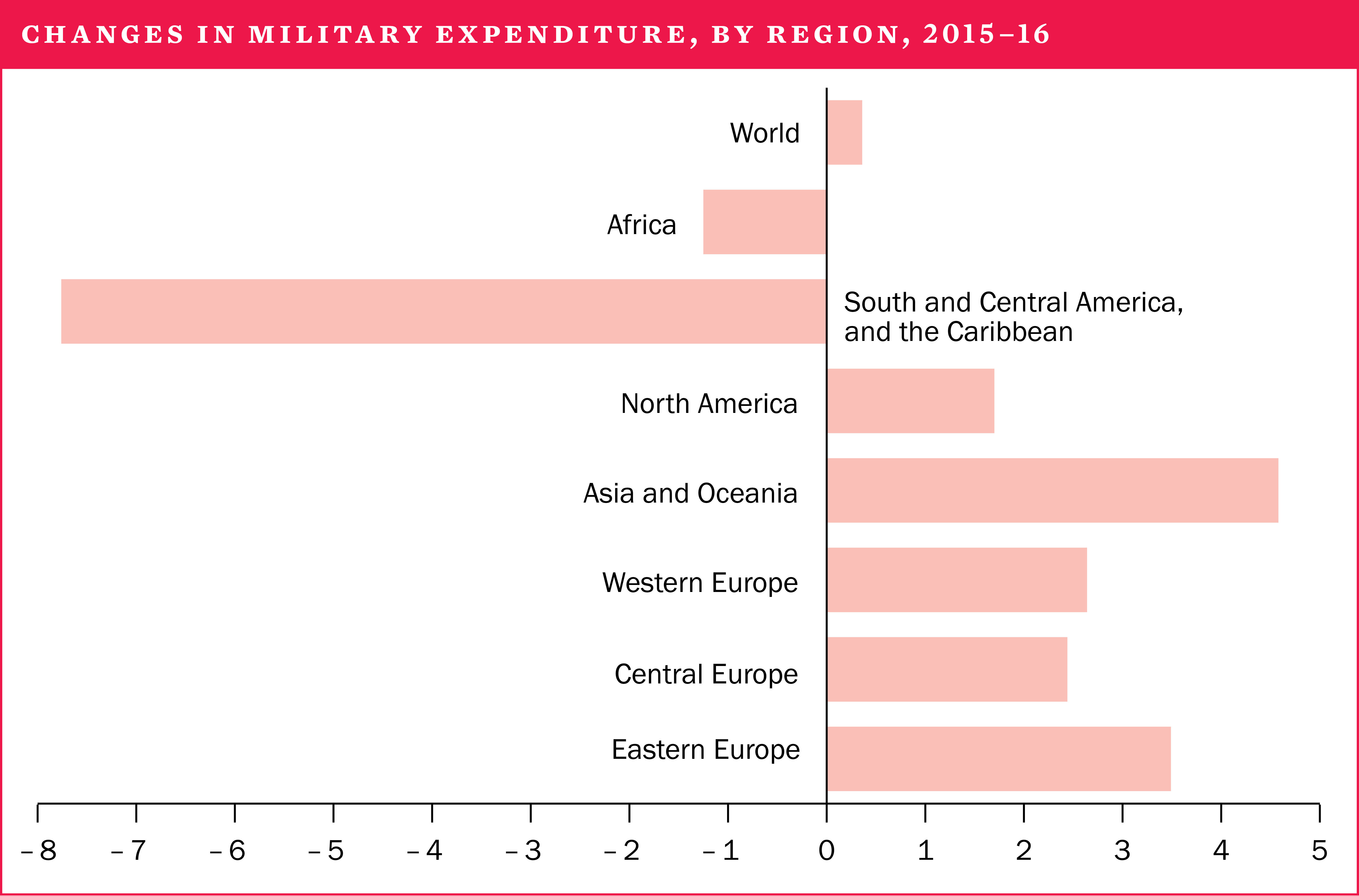9. Military expenditure
Overview, Nan Tian [PDF]
I. Global developments in military expenditure, Nan Tian, Aude Fleurant, Pieter D. Wezeman and Siemon T. Wezeman [PDF]
II. US military expenditure, Aude Fleurant [PDF]
III. Oil price shocks and military expenditure, Nan Tian [PDF]
IV. The backdating of SIPRI military expenditure data, Sam Perlo-Freeman [PDF]
V. Transparency in military expenditure data, Noel Kelly, Diego Lopes and Nan Tian [PDF]
World military expenditure was estimated at $1686 billion in 2016, equivalent to 2.2 per cent of global gross domestic product or $227 per person. Total global expenditure in 2016 was roughly constant compared to 2015, being only 0.4 per cent higher in real terms.
Military expenditure in North America saw its first annual increase since 2010, while in Western Europe spending was up by 2.6 per cent on 2015. Spending continued to rise in Asia and Oceania and Eastern Europe. In contrast, military spending fell in Africa, South and Central America and the Caribbean and those countries in the Middle East for which data is available. Overall, the increases in military spending in Asia and Oceania, Europe and North America have been almost completely offset by decreases in the rest of the developing world.
With a total of $611 billion, the United States remained the largest military spender in 2016. Its spending grew by 1.7 per cent compared with 2015—the first annual increase since 2010 when US military expenditure reached its peak. There is uncertainty over the future direction of US military spending, but estimates in the National Defense Budget suggest a modest increase in procurement and research, development, test and evaluation (RDT&E) spending for 2017, and substantial increases over the period 2018–21.

The impact of the oil price shock
The sharp fall in the price of oil, continuing the price slump since late 2014, had a significant impact on many oil export-dependent countries. Where there had been a close correlation between high oil prices and rising military spending over the previous 10 years, the fall in the price of oil has led to substantial decreases. The decrease in oil revenues has forced many oil-producing countries to cut their total government budget, and thus military spending. In Africa, South and Central America and the Middle East, the decrease in military spending in a few oil export-dependent countries has had a major effect on regional trends.
Cuts in government spending have led to resource prioritization choices and trade-offs between military and social expenditure. In the period since the oil price crash, the evidence from the national reports of oil export-dependent countries indicates an average decrease in military spending that is relatively greater than the decrease in social sectors such as health or education.

Military expenditure data
Although there has been a lack of voluntary reporting to the United Nations, many states publish military spending information in government reports, in budgets and on other publicly accessible platforms. Incomplete and inaccurate information on military spending is a problem due to its association with national security, but national transparency has improved in many cases. In 2016 SIPRI collected reliable and consistent military spending data for 148 countries.
An expanded SIPRI data set
SIPRI has achieved a long-held ambition to publish an expanded military expenditure data set that goes back in some cases as far as 1949. Providing data in constant and current US dollars and as a share of gross domestic product, the extended data set offers major opportunities for new research and insights into the dynamics of military spending. The data also enables the exploration of long-term trends in military expenditure in different regions and countries, covering both the cold war and post-cold war periods.